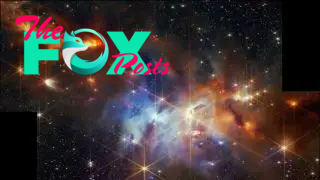Science
James Webb telescope spots a dozen newborn stars spewing gas in the same direction — and nobody is sure why
Astronomers using the James Webb Space Telescope (JWST) have observed a strange stellar phenomenon for the first time ever: A group of baby stars painting the walls of their nursery in seemingly coordinated jets of high-speed gas. And strangely, they are all pointing in the same direction.
This messy discovery presents the first direct image of a long-studied phenomenon called protostellar outflows — huge jets of gas released by newborn stars, which collide with and charge material in the molecular gas clouds that surround them. But it also reveals a baffling new mystery: Why do many of the newly discovered jets appear to be aligned in the exact same direction, despite coming from widely separated stars?
The observations, described in a new study in the Astrophysical Journal, could reveal crucial new information about how stars form, and how they evolve.
"Astronomers have long assumed that as clouds collapse to form stars, the stars will tend to spin in the same direction," principal investigator Klaus Pontoppidan of NASA's Jet Propulsion Laboratory said in a statement. "However, this has not been seen so directly before. These aligned, elongated structures are a historical record of the fundamental way that stars are born."
Related: James Webb telescope sees 'birth' of 3 of the universe's earliest galaxies in world-1st observations
The newly imaged baby stars share a nursery in the Serpens Main nebula — a vast and sinuous cloud of star-forming gas located in the Serpens constellation, roughly 1,300 light-years from Earth, according to NASA. Astronomers observed the nebula with JWST's powerful Near-Infrared Camera (NIRCam), taking note of the hot, ionized trails of gas pushing through the star-forming cloud.

The observations revealed at least 20 newborn stars in the region that were actively emitting protostellar outflows. One group of 12 stars (seen in the upper left corner of the JWST image) caught the team's attention. The jets blazing from these stars were all oriented in almost the exact same direction, "like sleet pouring down during a storm," according to the NASA statement. The team estimated that the outflows are relatively young, beginning between 200 to 1,400 years ago.
-

 Science2d ago
Science2d agoInside Capitol Hill’s Latest UFO Hearings
-

 Science2d ago
Science2d agoYou Won’t Want to Miss the Leonid Meteor Shower. Here’s How and When You Can See It
-

 Science2d ago
Science2d agoHere’s What Trump’s Win Means for NASA
-

 Science6d ago
Science6d agoWhy Risky Wildfire Zones Have Been Increasing Around the World
-

 Science6d ago
Science6d agoIt’s Time to Redefine What a Megafire Is in the Climate Change Era
-

 Science1w ago
Science1w ago4 Astronauts Return to Earth After Being Delayed by Boeing’s Capsule Trouble and Hurricane Milton
-

 Science1w ago
Science1w agoThe Elegance and Awkwardness of NASA’s New Moon Suit, Designed by Axiom and Prada
-

 Science1w ago
Science1w agoSpaceX Launches Its Mega Starship Rocket. This Time, Mechanical Arms Catch It at Landing


























